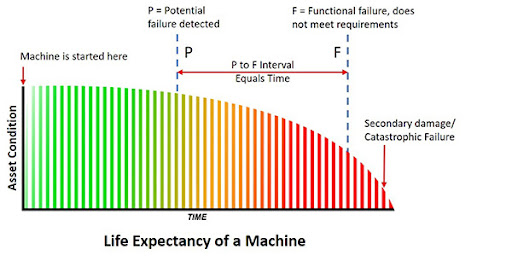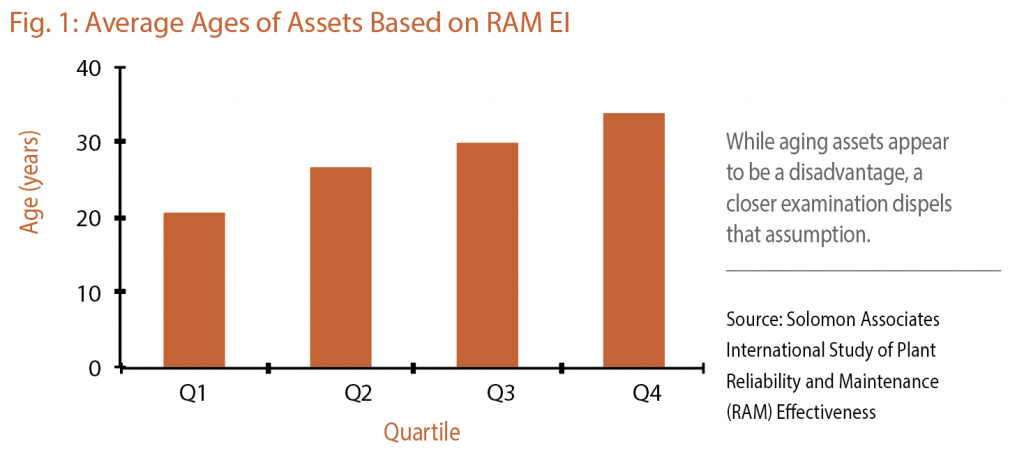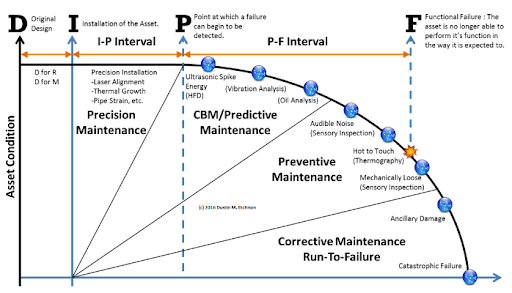Introduction:
In March 1980, 123 workers lost their lives when Alexander L. Kielland, a semi-submersible drilling rig, capsized. The reason? A bracing attached to one of the legs of the platform failed. When one broke, rest followed.
On inspection, a fatigue crack was found on the bracing. It went unnoticed, gradually worsened and led to the catastrophic disaster.
This is an extreme example of what could happen when your plant assets outlive their expected lives. Aging assets can lead to expensive repairs, costly downtime and even endanger human lives.
Even sudden stoppages diminish the competitive edge & process efficiency. Decreased efficiency and inconsistent performance lead to lower production yields.
However, periodic replacement of plant assets is not always practical. More importantly, not even needed. Contrary to common perception, an aging asset is not always a liability..
This article discusses how you can still get value from your aging assets using AI-based asset performance management solutions and stay profitable and disaster-proof.
What are aging assets?
Many operators believe asset age has a significant impact on reliability and maintenance. According to the P-F curve, the first “potential failure detected” comes not long after the machine starts the operation, then it develops into a functional failure, and if not attended can lead to a catastrophic failure.

Source: Ludeca
So aging must be closely associated with failures and losses, right?
Well, not exactly.
When Solomon Associates studied 8000 processing units over 30 years, they found that top performers owned 25% of assets with the highest age. Researchers didn’t even find chronological age to be a crucial factor.
 Interestingly, the top performers(Q1) at least had a 2% mechanical advantage over their closest competitors (Q2) despite having some assets of high age.
Interestingly, the top performers(Q1) at least had a 2% mechanical advantage over their closest competitors (Q2) despite having some assets of high age.
The conclusion is clear. A proactive maintenance attitude and an organizational mindset to prioritize best practices can give you a significant advantage over someone with “newer” assets.
This conclusion also matches with HSE definition of aging assets:
“ Ageing is not about how old your equipment is; it is about its condition and how that is changing over time. Aging is the effect whereby a component suffers some form of material deterioration and damage (usually, but not necessarily, associated with time in service) with an increased likelihood of failure over the lifetime.”
By sticking to the APM best practices, you can essentially elongate the P-F curve.

How AI can help to create value from aging assets
The most common approaches of APM strategies are 1) Preventive maintenance 2) Rule-based predictive maintenance.
Preventive maintenance is all about checking your assets at predefined intervals for any signs of failure. It is indeed resource-intensive. Also, this approach doesn’t take the current state of components or the efficiency of the operational process itself into account.
Rule-based Predictive maintenance is a better alternative as it focuses on constant monitoring of your assets. It prevents sudden breakdowns, potential catastrophes while ensuring a longer asset life.
Despite its perks, the Rule-based predictive maintenance approach has two significant downsides:
- A substantial chunk of generated alerts can be false positives or attributed to the wrong component. These can add up to a lot of wasted time for the maintenance team. Also, sometimes your team can miss a real alert because they are used to ignoring the frequent false alarms.
- A Rule-based Predictive Maintenance approach cannot work accurately in the real-world environment, where all factors are constantly evolving and the output of one system is interlinked to another. Here is an article that describes the issues with predictive maintenance.
With an AI-based predictive maintenance solution, you can bypass these challenges.
- Instead of raising an alert, AI determines whether an alert is appropriate in the given situation. This drastically reduces false positives and increases maintenance team productivity.
- An effective AI system utilizes the knowledge and feedback of human experts. It can quickly learn the best practices/responses by observing the reactions of your veteran engineers.
- The system not only sends alerts but also displays recommendations based on past encounters. This helps to make your team aware of the best responses and overall organizational APM mindset.
Apart from these, an AI-based APM solution also:
Proactively maintains aging assets:
An AI-based APM solution prolongs asset life by predicting issues and unplanned breakdowns long before they happen. This can save you considerable costs and hours of productive time.
Optimize the performance of aging assets:
It can rapidly identify assets that are performing sub-optimally based on KPI baselines. Once identified, it also indicates the reasons that might be causing these assets to function below par so that you get back to peak production without wearing your assets down.
Improve Operational Excellence:
An AI system can help a manufacturer arrive at an optimal process to produce maximum value at minimal resource consumption based on its knowledge. It can also automate manual tasks to lower costs and improve worker productivity.
Conclusion:
Plant assets age. There is nothing you can do about it.
But having assets with a longer operational period doesn’t mean you lose productivity or millions on maintenance. With an AI-based APM solution on your side, you can gain more efficiency while reducing costs regardless of your asset’s age.
